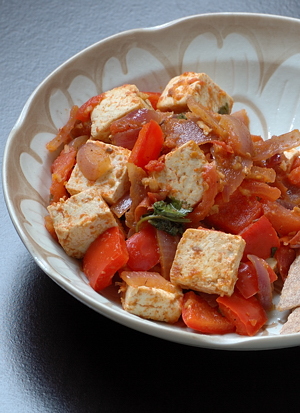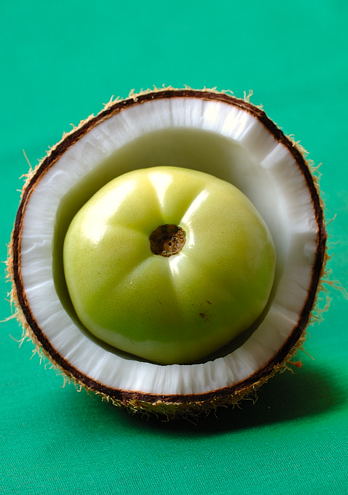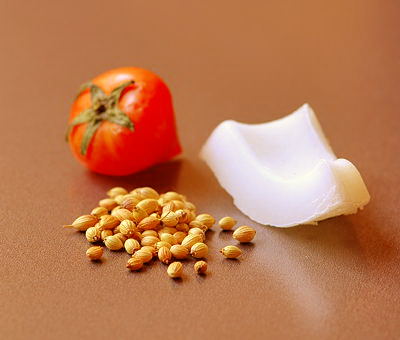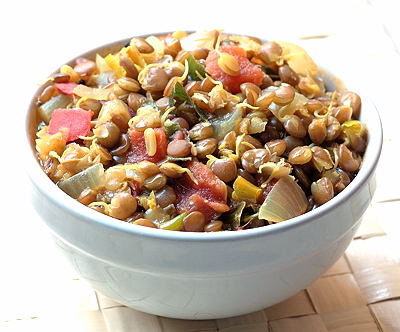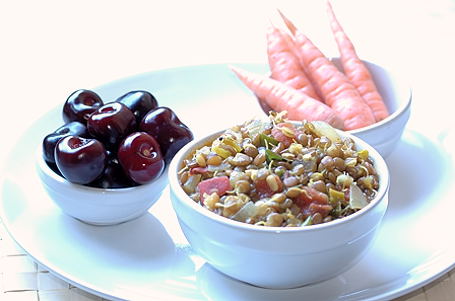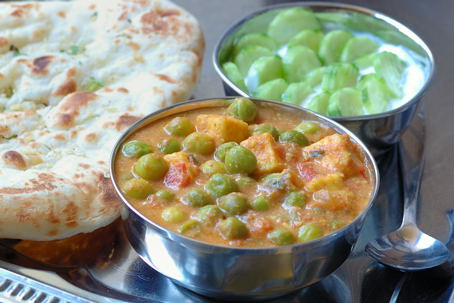
Tomato Pacchadi (Tomato Pickle)
A new grocery shop has opened in the neighborhood recently and they had a grand opening sale on some items. Good looking tomatoes, still on the vine were advertised for 49 cents a pound. The deal was irresistible and I bought 20 pounds thinking of making tomato pickle.
There are mainly two ways of tomato pickle preparation that I am familiar with. The sun-dried method and the stove-top simmering method. Both produce excellent tasting pickles of different personalities. The first one needs super bright sunshine. It’s hot here in Seattle since last week, but it is no way near Nandyala hot. So, I decided on stove-top simmering method. Mainly, it’s fail-proof and produces tomato pickle of high quality that’s ready to eat as soon as it’s done simmering.
Like in any pickle preparation, the ingredients quality matters a lot for tomato pickle also. Tomatoes that actually taste like tomatoes with thin skin and little bit under-ripe are the best. Traditionally, tomato seeds and skin are included in pickle for that special texture and extra something they bring to the end experience. Sesame oil, tamarind, fenugreek, red chilli powder, iodine-free salt, asafetida, garlic, and fresh curry leaves – total eight ingredients are needed, which can be purchased at Indian grocery shops for low prices.
Surrounded by all natural ingredients, simmered tomatoes in tomato pickle sure make a bold, declamatory statement on taste buds. Sweet, sour, salty and spicy, the rich taste of tomato pickle is an addictive one. We particularly like it with upma, pongal, and yogurt rice. Also as a spread on chapatis and on toasted bread.

Tomatoes for Pickle
Recipe:
Tomatoes: 25 tomatoes rinsed and wiped dry with a clean towel. Coarsely chopped – about 15 cups.
Tamarind: 3 index finger-length tamarind pods soaked in half cup hot water and juice extracted. Or about ¼ cup thick tamarind pulp (added to enhance the tomato’s sweet-sourness quality).
Sesame oil (non-toasted variety from India, not the Chinese type) – ¼ cup
Red chilli powder – ¼ cup
Iodine-free salt – ½ cup
Fenugreek powder – 1 tablespoon
For Popu or Tadka:
2 tablespoons sesame oil
2 sprigs curry leaves, about 15 fresh curry leaves
10 garlic cloves – thinly sliced lengthwise, (like sliced almonds)
¼ teaspoon asafetida (inguva)

Sliced to Chunks
In a big, non-reactive pan, add and heat sesame oil (¼ cup). Add the tomatoes to hot oil. Also the red chilli powder, salt and tamarind pulp. Mix and cover the pot. Cook on high heat, stirring in-between for about 30 minutes. Tomatoes will be mushed down and you will be seeing lot of tomato juice trying to lift the pot lid and splash the counter-tops.
At this stage, add the fenugreek powder. Reduce the heat to medium, partially cover the pot and simmer until the tomatoes become thick but spreadable like jam. It takes easily an hour. Fine-tune the balance and adjust salt and chilli levels to your liking. The next step will be adding the toasted popu or tadka ingredients.
In a skillet, heat the sesame oil (2 tbs) until a garlic piece tossed in it sizzles. Lower the heat to medium. Add the garlic first and then the curry leaves. Toast to pale gold color. Turn off the heat. Stir in asafetida. Mix and immediately add the toasted skillet contents to the tomato pickle.
Stir so that everything gets well combined. Simmer, uncovered for about ten minutes, gently mixing. Turn off the heat and let the pickle cool. (Do not cover the pot.)
Fill the completely cooled tomato pickle in a clean glass jar with a tight lid. It stays fresh for a month, and stores very well even without refrigeration.
Enjoy!

After one hour of simmering

Tomato Pickle ready to be placed in a jar
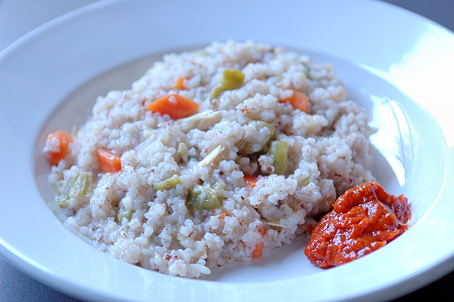
Rosematta and Yuba Vegetable Congee with Tomato Pacchadi
Recipe Source: Amma, Nandyala
If you are planning to make it with regular salt, reduce the quantity by couple of teaspoons, also adjust the salt level to your taste.

